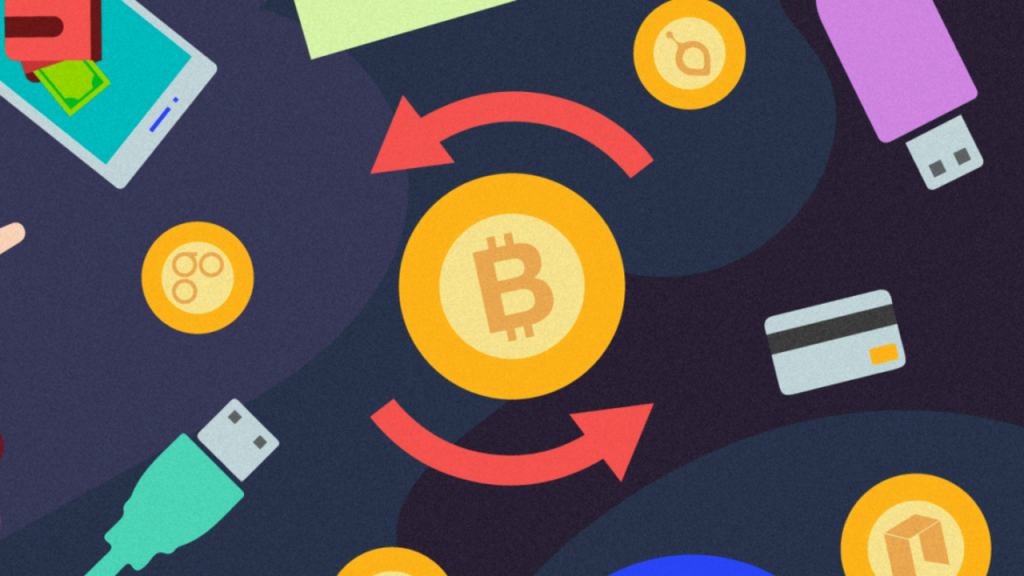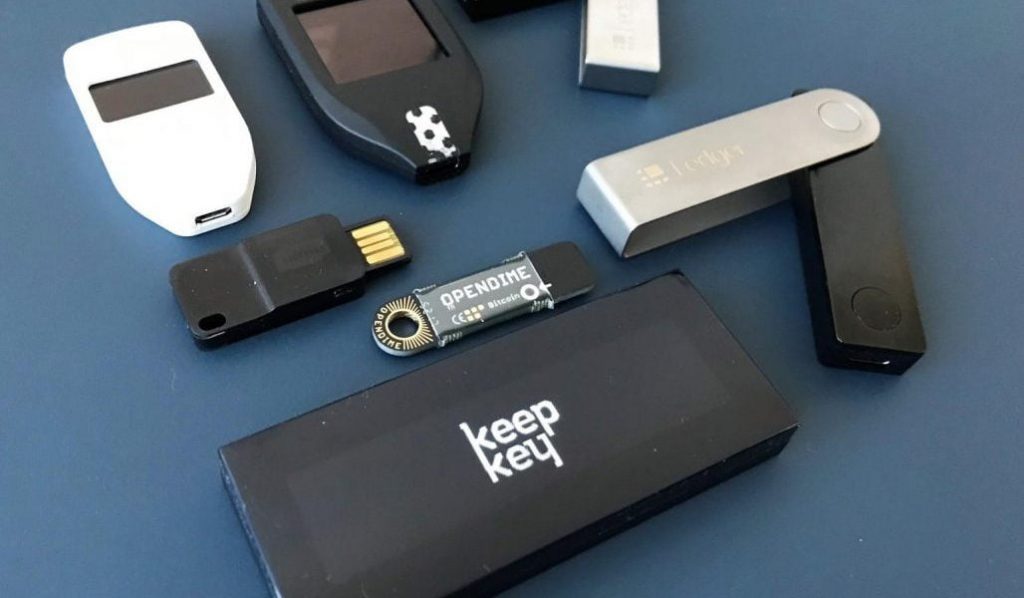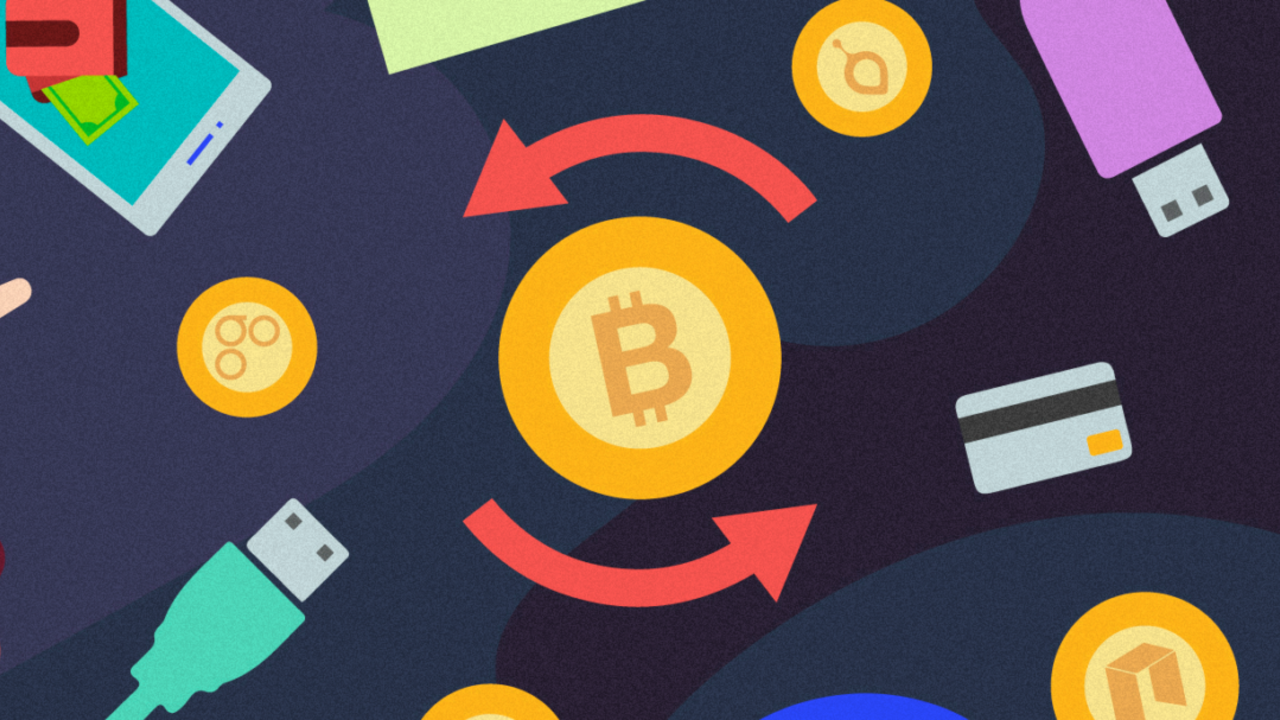
As interest in Bitcoin and cryptocurrency continues to surge, a growing number of questions arise around how to store crypto and Bitcoin safely and securely. One of the most popular alternatives for this is so-called Bitcoin wallets, or crypto wallets. Let’s, therefore, take a look at the history of Bitcoin wallets and the different types of wallets available for your crypto storage.
In this article, we will cover the evolution of Bitcoin storage from the very beginning, then compare and evaluate the differences between the wallets back then and the ones used today.
By the end of reading this piece, you should be sufficiently well-versed and educated regarding the history of Bitcoin wallets. As such, you will be properly equipped to decide which crypto wallet option is best for you.
Firstly, if you are new to Bitcoin and how it operates, here’s a brief overview of the technology powering cryptocurrency wallets, to better understand exactly how Bitcoin wallets work.
What Is Blockchain Technology?
Blockchain technology is the backbone of Bitcoin and all cryptocurrencies.
Instead of a central bank or organization controlling and completing financial transactions, a network of thousands of computers uses mathematical equations to verify transactions.

Once these equations are solved and there is consensus across the network that a transaction is valid, it is placed into a block.
When the block is full of valid transactions, it is appended to the blockchain – an infinitely long, distributed ledger of all previous transactions within the network.
To complete the mathematical equation involved in verifying a transaction, the equation includes data from the previous valid transaction; hashing (interlinking) the data between every transaction and thus every block on the chain.
Information on the blockchain is immutable, meaning it can not be removed or altered – and any attempt in doing so is viewable on the blockchain.
How Bitcoin Wallets Work
A few people may be surprised to learn that they do not own any ‘coins’, rather, people who own Bitcoin own pieces of code called UTXOs (Unspent Transaction Outputs).
With every transaction, there is an ‘input’ and an ‘output’ i.e. where the money is going from, and where the money is going to.

If someone is on the receiving end of a transaction, they receive transaction outputs. If this person chooses to hold, or ‘hodl’, their crypto instead of using them in another transaction, these outputs remain unspent.
Bitcoin holders are storing previously received outputs that currently remain unspent. When someone chooses to spend their UTXOs, they now become an ‘input’ to a transaction.
To make a transaction you will need to sign (confirm) the transaction with your private key as a digital signature. Your wallet will then check with the blockchain the amount of UTXOs there are available.
The blockchain will confirm the amount of UTXOs the wallet has, before sending the transaction to the nodes in the network to verify that the transaction makes sense.
Transactions are then placed in a ‘mempool’, a waiting area for unconfirmed transactions to be chosen by miners to verify, complete, and append the transaction to the blockchain.
In order to view your wallet balance, your wallet will communicate with the blockchain to see how many UTXOs are available, then calculate the total amount.
History of Bitcoin Wallets
2009
Satoshi Nakamoto knew when creating Bitcoin that there would need to be some way of storing these coins, and as such, alongside the release of Bitcoin in 2009, Nakamoto also released the protocol for the Bitcoin-Qt wallet – the first-ever Bitcoin wallet.
The first Bitcoin wallet was what’s known as a full client, which means you had to download the entire blockchain history for it to synchronize.
Initially, this was not a problem as there was little history to record, although the synchronization time soon began to increase. (See image below)
The wallet allowed users to send and receive coins as well as incorporating an address book. Bitcoin-Qt enabled the user to digitally sign a transaction, proving that they were the owner of a particular public key.

Starting from version 0.9.0, the Bitcoin-Qt wallet became known as the Bitcoin Core wallet, following a proposal by Gavin Andresen, preferring the word ‘core’ for sounding “strong and rock-like”.
2013
“It started as a hobby project — we wanted to make a couple of hardware wallets for our friends. But soon we realized that we had found a big market gap. Now we are one of the most trusted wallets in the world.”
Marek “Slush” Palatinus, CEO of SatoshiLabs
The history of Bitcoin wallets changed significantly this year when the creators of Trezor founded SatoshiLabs, and received crowd-funding for their TREZOR One promotion prior to its release.

2014
– Trezor

‘Trezor’ is Czech for the word ‘vault’.
In 2014 as the price of Bitcoin began to moon, people soon realized they needed a safer way to store their investments and recent gains. In March, Czech company TREZOR released the world’s first cold storage, hardware wallet, the TREZOR One.
It is a secure, user-friendly hard wallet that introduced seed recovery and passphrase protection (BIP39 and BIP44) – an open-source code that is used in more than 10 other hardware wallets, and most software wallet brands today.
– Xapo
A few months later in March, Hong Kong-based Xapo introduced its first form of cold storage, hardware wallet. The start-up has a strong development team and board of advisors, including the founder of Visa, CEO of Citibank, and the previous Secretary of the Treasury under President Bill Clinton.

Xapo customer funds are stored in offline, secure, encrypted servers that are never connected to the internet, similarly to Trezor.
However, Xapo stores its cold storage in vaults hidden somewhere in the Swiss Alps – the ultimate secure location for your private keys. Xapo is one of the founding members of the Libra Association, bringing the technical expertise to operate and securely expand the Libra Network. The Libra community’s goal is to create a simple, global currency and financial infrastructure that empowers billions of people.
– Ledger
In August, Ledger, a Parisian start-up with a team whose background boasts embedded security and cryptocurrencies, released their Ledger Nano.

Ledger introduced a unique operating system called BOLOS – Blockchain Open Ledger Operating System. Ledger’s vision is to transform Bitcoin hardware wallets into personal security devices – “ users can review and install third-party applications that will add new privacy features on top of their own shared set of cryptographic material, without exposing that material.“
Ledger was also the first hardware wallet to create the 2FA (two-factor authentication) cards to be used when making a transaction with the wallet.
2015
– KeepKey
KeepKey, founded in 2015, is the daughter company of Shapeshift – a business offering an instant digital asset exchange for a variety of digital assets via web and mobile platforms, with commission-free trading.

KeepKey produces a hardware wallet that supports over 40 different crypto assets. It is easy to use and affordably priced.
Users can send, receive, and hodl their crypto without the need to sign up to Shapeshift Membership to use the KeepKey wallet. However, KeepKey wallet holders can create a Shapeshift membership to receive exclusive perks such as rewards on trading volume and higher trading limits amongst other things.
2016
– Ledger Nano S
The next-generation Ledger Nano S arrived in August 2016 with a screen that replaced the 2FA cards, now standard across their range, greatly improving the user experience.

Each Nano S has a 128 x 32 pixels screen with only two buttons on the device which are used to sign transactions and navigate applications. Transactions can only be signed by the Nano S device in order to move funds from the corresponding wallet.
The Ledger Nano S supports between 3 and 20 apps depending on the size of the app. The upgrade allows users to manage their assets and ERC20 tokens using the Ledger Live app on desktop or mobile (Android only).
2017 – Now
Different Types Of Bitcoin Wallets:
– Paper Wallet
Paper wallets are the most secure way of storing your cryptocurrency. Users can generate QR codes representing their public and private keys, and then print them out on paper. This prevents any chance of being hacked as the data is stored offline, off the computer.
To use the wallet you will need to scan the QR code to upload funds to an online hot wallet in order to be able to trade. Paper wallets are best for long-time holders of cryptocurrency.
– Physical Bitcoin
Casascius brass tokens became popular as a store for Bitcoins shortly after being created in 2011. Similar to paper wallets, there were private keys stored underneath a tamper-proof hologram on the back of the coin. The first person to redeem its private key gets the value on the coin, and afterward, the coin no longer has any Bitcoin value. Casascius physical Bitcoins were produced in 1, 10, 25, 100, and 1000 BTC increments.
After a 2 year success, Mike Caldwel halted the production of the physical coins from Nov 26, 2013, when he was advised from the Financial Crimes Enforcement Network that he would need to register for state licenses on a Federal level in order to continue, as minting physical Bitcoins technically made him a money transmitter business.
– Mobile Wallet
Mobile wallets are becoming increasingly popular, largely for their ease-of-use and portability. Many mobile wallet apps provide a built-in exchange with a number of different trading pairs.
Mobile wallets are ideal for frequent trading, and for spending your crypto for goods and services at retailers, with Visa and Mastercard partnering up with many crypto firms making it easier than ever.
Mobile wallets are not designed for carrying around your entire life savings as they are hot wallets, meaning they are connected to the internet. Treat your mobile wallet in a similar way to your ordinary wallet – have a little bit in it to spend or trade, and keep your savings separate.
– Web Browser
Web browser wallets are also known as hot wallets and can be used as an extension on Chrome, such as the MetaMask wallet – a wallet that can hold any Ethereum token.

Web browser wallets are easy to access when you’re online and provide a seamless user experience when purchasing cryptocurrency through decentralized exchanges or interacting with Dapps.
Again, it’s worth bearing in mind that these wallets are connected to the internet, so it is not advisable to be holding large amounts of money in them, as online hot wallets are more vulnerable to hacks.
– Desktop
An alternative choice of storage for your Bitcoin and crypto is a desktop wallet. These provide more security as they are not connected to the internet.
Wasabi wallet was voted the top desktop wallet (though it does have a mobile platform as well) and is compatible with all major hardware wallets including Ledger and Trezor.
Desktop wallets can be known as cold storage or hard storage and are great if you will be making frequent transactions from your computer. It is your responsibility to ensure your computer’s security protocols are up-to-date.
– Hardware Wallets
We have already explained the history of hard wallets, however, in the past few years, there have been updates and new models released from both Ledger and Trezor.

Trezor has since released the Model T. The main difference between the Trezor Model T and Trezor One is that the Model T has a touchscreen and the Trezor One has two pushbuttons. The touchscreen option provides a nicer user experience compared to the previous fiddly buttons of the Trezor One. It also provides additional security in the recovery seed phrase process.
The Ledger Nano X is a step up from the Nano S, with a larger capacity size storing up to 100 apps (depending on the app size). In addition, the Nano X is compatible with the Ledger Live app on both Android and iOS.
It is slightly larger in size than the previous Nano S, with a 128 x 64-pixel screen and Bluetooth compatibility with the Ledger Live Mobile.
– Banks
As of July 2020, national banks and federal savings associations in the U.S can provide custody services for customers for their cryptocurrency private keys.
The OCC (Office of the Comptroller of Currency) sent out a letter to all major banks in the U.S, informing that the cryptocurrencies are now to be treated just like any other digital asset.
– DeFi
This year has brought a new narrative to cryptocurrency with decentralized finance. DeFi has grown to be one of the largest catalysts for the 2020/2021 bull run, as the technology conveniently weaves the traditional financial system within new crypto services.

From the beginning of 2020, we have seen an array of borrowing, lending and staking services available on the blockchain, making it easy and simple to earn passive income from storing your Bitcoin or other cryptocurrencies with reputable services such as BlockFi – where you can earn up to 8.6% APY in their interest-bearing account. BlockFi is a custodial service using Gemini wallets.
The Celsius app offers users a cash loan using crypto as collateral. Coinbase is now offering staking rewards for Tezos and DAI, whilst Binance offers users staking rewards on a variety of other coins too.
Conclusion
A lot has changed in the past decade, and the history of Bitcoin wallets shows that it has become easier than ever to securely store and transfer your cryptocurrency. Bitcoin and other cryptocurrencies are less hassle to store and travel with than any other asset.
There are increasingly more options than ever before to store, but also stake, lend, and borrow your crypto when interacting with different wallets.
2020 also introduced ‘yield farming’ for those who want to take their risk:reward ratio to the next level. Compound for example offers users the chance to stake their crypto, and take out a loan, which can then be staked and lent out again, and the process can repeat until moon-worthy gains or Rekt City. Many of these services can be accessed within a wallet or app.
There is a strong demand for a smooth user-experience and interoperability, with Coinbase recently integrating support Unstoppable Domains crypto addresses from within the Coinbase app, making the experience more streamlined and user-friendly by removing the long code addresses and replacing them with personalized easy-to-read wallet addresses like myname.crypto.
The improvements in the technology behind these wallets are creating some really nice products which are both easy to use and provide a wealth of financial tools which you won’t find at the banks. If you want to learn more about the history of Bitcoin, cryptocurrencies in general, and everything blockchain-related, be sure to check out Ivan on Tech Academy, the premier online blockchain academy. Mass adoption of crypto could be just around the corner – don’t miss out on joining the blockchain revolution!





